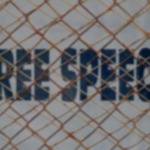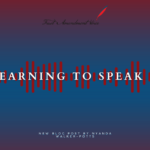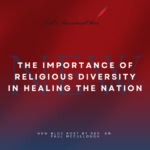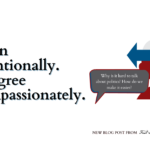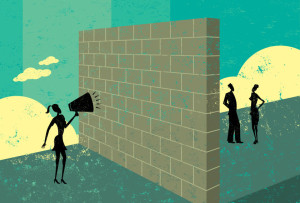
by Dan | May 27, 2020 | Uncategorized
 Censorship will always be a major concern for any First Amendment advocate, but it’s been especially alarming to witness the number (and the restrictiveness) of censorship policies rapidly scaling up around the world during the Covid-19 pandemic.
Censorship will always be a major concern for any First Amendment advocate, but it’s been especially alarming to witness the number (and the restrictiveness) of censorship policies rapidly scaling up around the world during the Covid-19 pandemic.
While China is a prominent censor of information online, Western countries aren’t immune from trampling on citizens’ rights to freedom of expression, press, religion, petition and assembly, either. So how are governments and major tech companies responding to the pandemic? Let’s explore what censorship is currently going on through social media and examine how Covid-19 might impact our First Amendment rights in the future.
Combating the Spread of Misinformation
Every single social media platform has been struggling to combat the spread of public health misinformation since the start of the outbreak. Arguably they struggled prior to the onset of Covid-19, but coronavirus hit especially hard with so much political division across the country, unprecedented government actions around the world, and increasingly tense relations with China.
Not to mention the millions of people at home, unemployed, with suddenly plenty of opportunities to browse and share potentially dubious information with their online networks. Just as grocery stores were slammed with overwhelming, unexpected toilet paper demand in March, social media sites like Facebook, Twitter, YouTube, TikTok, Instagram, and Reddit were flooded with misinformation and couldn’t fully snuff out the spread right away.
Several of them are hustling to update their terms of service regarding the type of information shared on their platforms – especially during a public health crisis – but not having a rigorous policy already in-place prior to Covid-19 has led to rampant accusations of wrongful censorship and biased assessments of posts. It’ll likely remain an issue for many months/years to come, especially when we consider the freedom of assembly implications involved here.
Selectively Censoring Protests?
An April 20, 2020 article from Vox highlighted how Facebook was taking down some anti-lockdown protest event pages, but not all. Vox reported that a Facebook spokesperson informed them, “Unless government prohibits the event during this time, we allow it to be organized on Facebook. For this same reason, events that defy government’s guidance on social distancing aren’t allowed on Facebook.”
In other words, Facebook has been allowing anti-quarantine protests to continue organizing on its platform in areas where social distancing laws do not forbid it but users in cities, counties and states with some form of shelter-in-place order will likely get their event pages deleted to comply with local laws.
The Future of Online Censorship
We could write several books just on the subject of how the pandemic might influence First Amendment related issues like censorship and freedom of expression in the short- and long-term future. However, we’ll conclude for now with a broad overview of the aspects of life in civil society that are most likely to change after Covid-19 and a related First Amendment question we’ll be paying close attention to in the coming years:
- Masks and Freedom of Expression: Religious individuals have the right to don religiously meaningful garb (e.g., hijab or nun’s habit) and there are certain types of clothing that aren’t allowed in some public spaces. So what does this mean for the future of masks in our society? Would a law requiring people to wear masks when out in public violate their rights to freedom of self-expression?
- Freedom of Assembly During Quarantine: When in conflict, should the government prefer to protect public health or continue guaranteeing their relatively unrestricted rights to freedom of assembly? If the government must balance the two priorities, what would be an appropriate penalty for quarantine violators that doesn’t infringe on their First Amendment rights?
- Threats Against Journalists: There have been several reports from around the world about journalists facing threats or even violence in response to their attempts to hold power to account by accurately investigating and reporting public health information (e.g., infection rates, areas affected, lack of leadership, etc.). How can journalists safely fulfill their obligation to inform the public if the information might shine a negative light on their political leaders (and thus, they may attempt to silence reporters)?
- Freedom of Religion: If you haven’t already, be sure to check out our in-depth analysis of how religious institutions are adapting to what may become their “new normal” after Covid-19.

by Dan | May 13, 2020 | Uncategorized
What may have seemed unimaginable in the United States not long ago is now a reality. Cities are going on lockdown. Businesses and places of worship are closing their doors. In most areas, people are being instructed to practice “social distancing,” which means staying at least six feet away from others and even staying at home. This is all thanks to COVID-19, a rapidly-spreading virus that has been deadly to the elderly and those with immune disorders.
Although social distancing is important, it can be challenging. Loneliness is rough on your mental and physical health, and studies have shown it can even weaken your immune system. That’s why it’s important to remember that social distancing is different from loneliness and self-isolation. Just because you’re staying at home doesn’t mean you can’t make an effort to maintain relationships with your family, friends and communities. Here are a few ways you can stay social without being physically near other people.
Phone calls and video chat. This may seem obvious, but we really take phone calls and video chat for granted sometimes. Step away from texting and social media and have an actual conversation. Many people are making use of Marco Polo, Skype and Google Hangouts. If you have a large family, you could create a large group message and family members to keep tabs on each other.
Neighborhood events. Social distancing has given us a lot more time to be creative. It’s still possible to hold social events without being in close contact. For instance, this neighborhood hosted a Zumba class that was possible because everyone stayed far away from each other. Some neighborhoods have hosted “chalk your walk” events, inviting neighbors to draw encouraging messages on their sidewalks for walkers to enjoy. You also could invite neighbors to hang fun pictures in their windows.
Get together with a friend, social distancing style. The CDC recommends staying six feet away from others, not avoiding them completely. If your community isn’t on lock down, you can still spend time with a friend while maintaining social boundaries. Arrange for a car lunch date, where you each both bring a sack lunch, park near each other and talk from a distance. Go on a walk together and stay a safe distance apart. Go on a walk around your neighborhood and shout hello to friends and neighbors doing yard work.
How do you plan to stay in touch with friends and family during this crisis?

by Dan | Apr 22, 2020 | Uncategorized
 The news about Covid-19, aka the coronavirus, is changing on a daily basis (sometimes hourly). This has proven to be deeply disruptive to many people’s lives around the world as we navigate these unprecedented times like a ship caught in a storm.
The news about Covid-19, aka the coronavirus, is changing on a daily basis (sometimes hourly). This has proven to be deeply disruptive to many people’s lives around the world as we navigate these unprecedented times like a ship caught in a storm.
As we discussed in our first blog post on the pandemic, social distancing restrictions enacted by public officials (with the recommendations of countless medical and public health professionals) carry numerous implications for our freedoms of speech, assembly, press, petition and religion.
In this month’s post, we’re going to explore how religious leaders and institutions around the world have adapted to the restrictions imposed on mass gatherings as the primary means of flattening the curve:
No Mass Gatherings
The First Amendment guarantees citizens’ rights to assemble and freely practice their religion – but what if gathering could lead to devastating health consequences? A major part of many religious practices around the world involves communal gathering, which has created significant challenges during major religious events like Easter and Ramadan.
For instance, Islam’s third-holiest site – Al-Aqsa mosque in Jerusalem – was closed to Muslim worshippers for the fasting month of Ramadan
How Have Faith Leaders Responded?
While most religious institutions have abided by CDC recommendations by switching to remote services, small group meetings, praying times and meditation sessions, there were also several reports of religious leaders defying state-imposed social distancing restrictions that prevented mass gatherings of 5-50 or more (varied from state to state). By the end of March 2020, multiple religious leaders – from many different faiths and sects – had contracted Covid-19 and passed away.
It’s important to note, however, that a vast majority of faith leaders have followed their state or country’s social distancing guidelines and many are busy developing new ways of communicating with their members, as well as positively serving their communities during the outbreak
Different Community Impact
In “normal” times, religious institutions serve as a place for worship, congregation, spiritual and social connection; in “corona” times however, these institutions are legally (and, some argue, morally) prohibited from engaging in many activities and services they normally fulfill for members and the wider community.
Fortunately, faith leaders from all over have come up with innovative ways to still make positive impacts on their communities, including:
Will These Changes Persist After the Pandemic?
Many are hoping religious services will go back to normal after the pandemic ends (or at the very minimum, social distancing restrictions are heavily relaxed), but there will likely remain some long-lasting consequences for religious institutions after 2020.
Starting with the not-so-great news: many religious institutions and groups are struggling financially during the pandemic. Many are operating on a fraction of their usual budgets due to lower-than-anticipated funds coming in during weekly services, and even the tech-savvy organizations with well-designed, easy-to-navigate donations pages are struggling due to their members’ unwillingness or inability to send electronic donations.
On a more positive note, the innovations developed now could help religious leaders run their organizations more efficiently in terms of financial management, technological tools for reaching new and current members alike, and adaptability in case there’s ever another pandemic or natural disaster or other reason preventing everyone from coming together to practice their faiths.
There’s no telling what may happen in the coming months. Public health is extremely important, and we must continue to advocate for our First Amendment freedoms while also doing our best to protect our friends and neighbors. If you are interested in this topic and want to learn more, we held a virtual Town Hall on this, which you can replay here.

by Dan | Apr 8, 2020 | Uncategorized
 With the unprecedentedly quick spread of COVID19 (also known as the coronavirus), governments around the world have been struggling to manage official responses to the pandemic. The variety of responses in recent months – from China locking down the Wuhan region for several weeks to reports of massive spring break crowds on beaches in the U.S. while COVID-19 is actively spreading – have led to varying results for politicians and public health officials trying to stop the spread of the contagion before it overwhelms hospital systems.
With the unprecedentedly quick spread of COVID19 (also known as the coronavirus), governments around the world have been struggling to manage official responses to the pandemic. The variety of responses in recent months – from China locking down the Wuhan region for several weeks to reports of massive spring break crowds on beaches in the U.S. while COVID-19 is actively spreading – have led to varying results for politicians and public health officials trying to stop the spread of the contagion before it overwhelms hospital systems.
Unfortunately, these unprecedented times have also posed an unprecedented risk for many of our First Amendment freedoms, particularly that of freedom of assembly. While we have no way of predicting how or when this will end, it’s important to be mindful of the ways in which governments could infringe upon our individual liberties. While many actions taken by countries in February and March were likely essential for protecting public health to some degree, we should continue to watch the situation closely to ensure our First Amendment freedoms aren’t curtailed, as a Washington Post article suggested might happen.
Freedom to Assemble
The freedom of assembly in the U.S. Constitution refers to the people’s rights to come together and protest, advocate for change or defend their shared ideas. Compared to freedom of speech and freedom of the press, this First Amendment right doesn’t seem to get as much attention in media – until now, of course.
With government leaders following WHO recommendations for “social distancing,” “self-isolating” and “shelter in place” restrictions on movement, the public is increasingly unable to come together in the physical sense (e.g., a march on Washington D.C. or community protest). However, these unusual times have amplified the importance of electronic communications in collective organizing, discussions and even protests, as politicians are communicating much more extensively with their constituents through live video conferences, emails and social media.
Members of the public are also leveraging electronic communication as the new means for coming together in online spaces while physically congregating remains limited or prohibited in many places around the U.S. and the world beyond. People have been circling petitions, sharing coronavirus updates through social media, debating public policy options, and mobilizing others to help their communities in creative ways, such as organizing meal delivery services for elderly and other at-risk populations, sharing remote teaching techniques and offering support for people struggling with health issues or job loss.
We may not be able to freely assemble outside during a pandemic, but the public’s innovative uses for electronic communication during times of restricted social contact could pave the way for new avenues of assembly to rise up in digital spaces in the future.
Freedom of the Press
The freedom of the press has also been tightened somewhat during the COVID-19 pandemic (of course, freedom of the press was already on a global decline prior to the spread of the coronavirus). During the pandemic, some politicians have limited or banned reporters from in-person briefings, such as President Trump’s decision to limit the number of Chinese journalists allowed to work in the U.S. for CCP-led publications, followed by China’s expulsion of American journalists working for The New York Times, The Wall Street Journal and the Washington Post.
By removing journalists’ ability to get to the heart of a problem and report accurate information to the public, governments are hindering our ability to maintain a free and independent press. Time will tell if these restrictions lighten up, but it certainly poses an interesting dilemma between informing the public and protecting public health that will likely remain an issue for future global pandemics.
Freedom of Speech
Freedom of speech is another First Amendment freedom affected by the spread of the coronavirus and subsequent government efforts to slow the outbreak. Social media websites have tightened restrictions on what can and cannot be posted about the virus, largely in an attempt to prevent fake news stories or harmful health advice from gaining traction, such as the dangerous advice of drinking bleach to cure coronavirus (it doesn’t work).
People have also been arrested for falsely claiming to have tested positive for Covid-19, which the Tyler County (TX) DA’s office explained in a Facebook post, warning people could be charged for “knowingly communicating, initiating, or circulating a false report/false alarm of COVID-19 that one knows is false or baseless.”
These may seem like uncertain or even frightening times, but a global pandemic doesn’t have to mean the erosion of our First Amendment rights is inevitable. Human Rights Watch put out an excellent analysis of human rights affected by COVID-19 (including many of our First Amendment freedoms) and staying informed while staying safe is essential for protecting our Constitutional rights for generations to come.
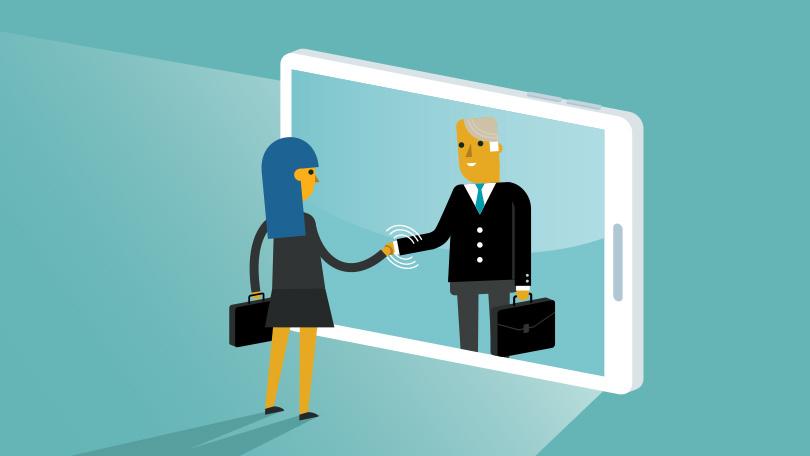
by Dan | Apr 2, 2020 | Uncategorized
FAV Friends,
Given the social restrictions from the Covid-19 virus, we shifted our programming to virtual platforms. Faith leaders from different religions provided a panel discussion during our recent Town Hall on how faith communities are adapting to the virus restrictions. They shared best practices and encouraged each other on how best to attend the spiritual needs of their congregations. If you missed the Town Hall but wanted to attend, you can watch the video on our YouTube channel. We also shared resources (see below) from Georgetown University’s Berkeley Center and the Sacred Sector, led by Chelsea Langston Bombino, one of our speakers and also a FAV Board Member.
Since we will continue to face a lot of uncertainty due to the public health challenge, FAV anticipates that upcoming programming will remain in the virtual realm. We are in talks with Kern Beare to present his Difficult Conversations workshop over our Zoom platform while also developing the capability to take our popular coffee talks to the virtual space. Send your ideas to [email protected] if you would like us to consider something.
You may have seen the Edward D. Lowry Memorial Award for Citizenship press release last month. Ed was an amazing contributor to FAV, his church, and his community during a lifetime of service. If you know someone who embodies the following criteria, please submit a one page writeup to our nomination’s team at [email protected] with an email title, 2020 Lowry Award Nomination.
Criteria
- Relentless service to others
- Able to work across ideological differences for the common good
- Fearless advocate of the First Amendment and its champions
- Overcomes setbacks; strives on in the face of adversity
- Exhibits strategic thinking but able to translate that into results
- Inspirational: encourages others to give of time, talent or resources
- Consummate networking to connect organizations & people for community impact
On a final note, please stay safe out there! We will get through these hard times together. Keep reaching out to your friends and family to remain socially connected while using practical physical distancing!
Steve & the FAV Team
Check out these resources we shared from the town hall:
The Sacred Sector contains the following, but the password is the same for all links: SacredSector2020
We are providing you with access to Sacred Sector’s Participant Portal, which includes Sacred Sector Toolboxes and Standards for Excellence® Resources.
Georgetown University’s Berkeley Center information: http://bit.ly/faith-and-COVID-19
Upcoming Dates
April 16 – Delegate videoconference: How to organize a coffee talk or difficult conversation workshop

by Dan | Mar 25, 2020 | Uncategorized
 Fake news has arguably never been a bigger problem than it is today. Misinformation spreads like wildfire online, which can have serious implications if anyone ever acts upon false information, such as the Pizzagate incident in 2016.
Fake news has arguably never been a bigger problem than it is today. Misinformation spreads like wildfire online, which can have serious implications if anyone ever acts upon false information, such as the Pizzagate incident in 2016.
To date, search engines and social media platforms have been reluctant to apply more stringent standards for content published and circulated on their websites. Since censorship poses a serious issue for First Amendment rights, how can we genuinely combat the spread of false information without resorting to draconian censorship policies?
The government and tech companies may not develop an ideal solution for a while but in the meantime, here are three strategies individuals like you can try to detect and avoid fake news and reviews online:
Media Bias / Fact Check
One of the most comprehensive news fact-checking websites is Media Bias / Fact Check (MBFC), which is a donation and third party advertising-funded platform “dedicated to educating the public on media bias and deceptive news practices.” They have teams of editors and fact-checkers who evaluate news organizations and stories to determine the credibility of each source; they also have lists for sources categorized by political leaning, as well as “Least Biased,” “Conspiracy-Pseudoscience” and “Questionable Sources” categories.
MBFC employs a rigorous and transparent methodology for source credibility evaluations, making it an ideal resource for anyone searching for easily accessible information about the trustworthiness and potential bias of a news source.
CRAAP Test
If you cannot find a particular source on MBFC or you want to evaluate the credibility of a source on your own, then your best bet would be the CRAAP test, which stands for:
- Currency: how timely (recently published and updated) is the information?
- Relevancy: how important is this information for your needs and are there other sources with similar information?
- Authority: who is the publisher and what are their credentials and reputation?
- Accuracy: how reliable is the information? (Where did it come from and is the language relatively unbiased and free of emotion?)
- Purpose: why does this information exist and are the points of view expressed relatively objective and unbiased?
With the CRAAP test, you’ll be able to reasonably determine whether an article or publication source is excessively biased or even fake by analyzing the aforementioned most important factors related to a source’s credibility.
FakeSpot
Beyond the news, fake information is rampant online – especially on reviews-driven websites like Amazon, TripAdvisor, Walmart.com and Yelp. To avoid getting duped by fake reviews (or companies that use shady tactics to rake in more five-star reviews for their products), copy the web link and plug it into FakeSpot.
FakeSpot’s algorithm will assess a variety of factors for a particular product or business page and produce a grade of A, B, C, D or F based on the likelihood of deception (based on review patterns), quality of review content, percentage of reliable reviews, and other related factors.
Recap: Don’t Get Fooled by Fakes
Whether you’re concerned about reading and inadvertently sharing fake news or you want to avoid buying products supported by lots of fake reviews, we hope you’ll try out any of these three strategies for detecting fake information online so you can avoid the pitfalls of reading, believing and sharing misinformation with your own social network.

 Censorship will always be a major concern for any First Amendment advocate, but it’s been especially alarming to witness the number (and the restrictiveness) of censorship policies rapidly scaling up around the world during the Covid-19 pandemic.
Censorship will always be a major concern for any First Amendment advocate, but it’s been especially alarming to witness the number (and the restrictiveness) of censorship policies rapidly scaling up around the world during the Covid-19 pandemic.






